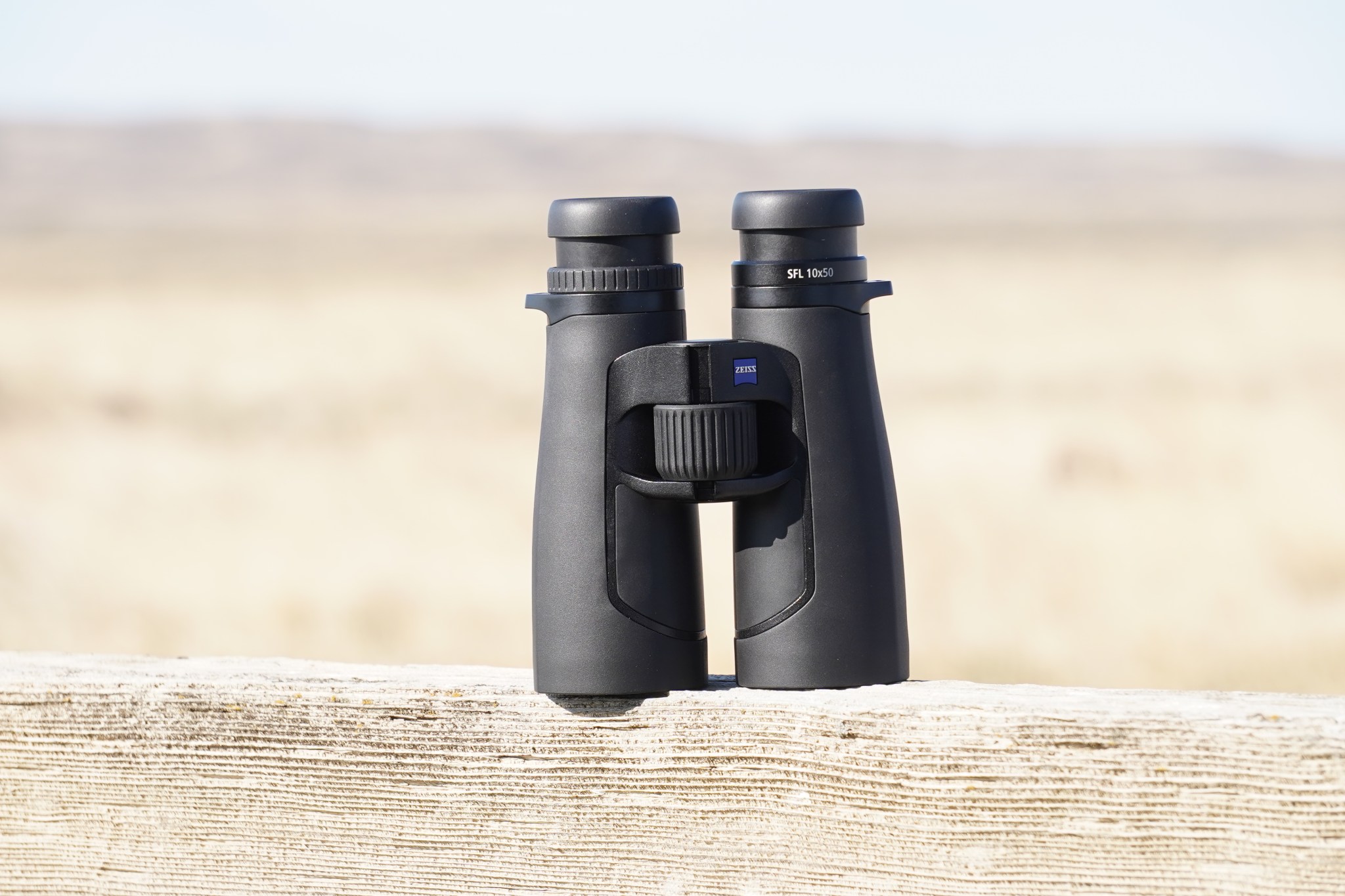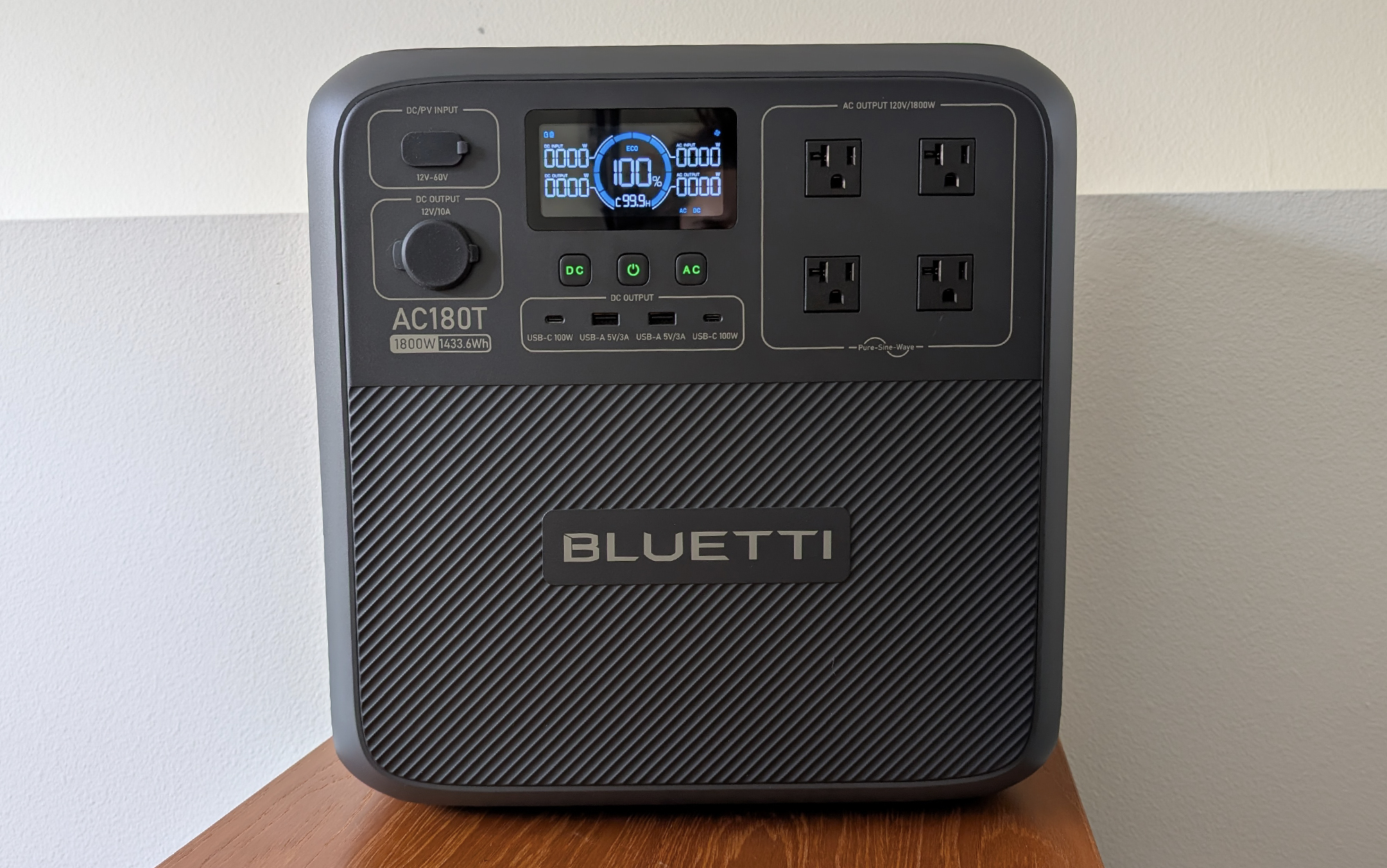First Look at the New Zeiss SFL 50 Binoculars in 8×50, 10×50, and 12×50

We may earn revenue from the products available on this page and participate in affiliate programs. Learn More ›
Just when you thought there was little room for innovation in the relatively hidebound category of walk-about binoculars, Zeiss this month released a 50mm version of its light, bright, and competitively priced SFL line.
Zeiss SFL 50 Specs
Photo by Andrew McKean
Buy From Euro Optic
Buy From Lancaster Archery Supply
- Double-hinge, open-barrel design
- Schmidt-Pechan roof prism
- Right-barrel diopter control
- Oversized SmartFocus focus dial
- 5-position tapered and removable eyecups
- Tripod mountable
- Weight: 30.2 ounces (10x), 30.8 ounces (12x)
- Length: 6.3 inches
- High-transmission glass in prism, ED glass in objective lenses
- FieldFlattener ocular lenses
- Price: $1,800 to $2,000
Zeiss SFL 50 Overview
The new SFL 50 line is available in 8×50, 10×50, and 12×50 configurations, and packs all the image brightness of a 50mm objective lens in the compact form-factor of a 42mm binocular. It achieves this balance by thinning internal lenses and placing them closer together to reduce the overall length of the binocular. At just over 30 ounces and 6.3 inches long, it’s the smallest and lightest 50mm binocular on the market. Its dimensions are on par with most 42mm models.
Other noteworthy details are its ergonomic SmartFocus wheel that dials from close-focus of 6 feet out to infinity in just 1.4 turns of the center-hinge focus control, best-in-class field of view thanks to field-flattener ocular lenses, 5-position contoured and removable eyecups, and a lightweight and durable magnesium chassis.
Its external dimensions are streamlined through an industrial design that tapers from the significant 50mm objective lenses into elegant eyepieces with 5-position eyecups.
Why a 50mm Objective?
The 50mm iteration of the SFL brings to seven the configurations in the Zeiss binocular line, with 8×30 and 10×30 models in the 30mm class and 8×40 and 10×40 models in the 40mm class. Each SFL model shares an optical design characterized by thin internal lenses to reduce weight and a shorter optical path to reduce length.
In the case of the 50mm class, the design also creates a brighter image thanks to a large exit pupil. That’s the bright disk you see if you look at the eyepieces from an arm’s length. An optic’s exit pupil is determined by dividing its objective lens diameter by its magnification, so a 10×42 binocular has a 4.2mm exit pupil. One reason that 10×42 binoculars have dominated hunting and birding markets, besides their balance between magnification and portability, is that the 4.2mm exit pupil is nearly identical in diameter to the pupil of a human eye in most light conditions. In practical terms, that means a 10×42 delivers just enough image brightness in most conditions.
A 10×50 binocular, on the other hand, has a 5.0mm exit pupil, large enough to deliver a bright image even in lower-light conditions, when human pupils dilate to allow more light to enter the eye. The consequence of the larger exit pupil is a brighter image in all conditions, but the advantage is especially noticeable in low-light situations.
Zeiss’s 12×50 SFL model has a 4.17mm exit pupil, nearly on par with that of 10×42 binoculars.
“50mm bright, 42mm light” is Zeiss’s tag line for the new frame size of its SFL. My field testing of the 10×50 model pretty much confirms this value proposition. The Zeiss is extremely bright, and thanks to the brand’s time- and abuse-resisting T* objective lens coatings, colors are vivid though with the slight bluish hue shared by most Zeiss optics. I found image sharpness crisp but did detect slight peripheral distortion.
Ergonomics
Ergonomically, the SFL is a marvel. The oversized and nicely textured SmartFocus focus wheel handles like a high-performance car, responding immediately to only small movements of the dial. I found the dial to be just slightly forward of the natural reach of my index fingers, which means I mainly used my middle fingers to feather the focus. That’s hardly a deal-breaker, and other users will undoubtedly find the focus-wheel location perfectly located for index-finger operation.
Overall balance is extremely satisfying. The 10×50 SFL is a chunk, but it fits in most binocular harnesses and balances nicely in hand, its heft serving to quiet any shakes. I haven’t handled the 12×50, but I’d expect the balance is an even bigger attribute for that configuration, since 12-power binoculars normally exhibit some distracting hand-shake.
In either configuration of the SFL, tripod mounting is a cinch. The binocular has a standard ¼-20 thread on the front end of the hinge, and Zeiss ships its very good tripod adapter with the 12×50 SFL.
Read Next: Best Binoculars
The Upshot
Overall, the upsized version of the SFL is a winner and positions Zeiss as a leader in the hyper-competitive premium binocular market, where it competes with Swarovski’s EL and NL Pure binos, Leica’s Ultravid HD, and Vortex Razor UHD.
As with those other premium binoculars, the SFL is an investment-grade optic. The 10×50 SFL is priced at about $1,800, the 12×50 version will retail for just under $2,000.
Given the savings in weight and boost in optical performance, the 50mm SFL should be considered by big-game hunters and birders who want all the magnification, portability, and optical performance of a traditional binocular without the fragility and batteries of a stabilized binocular.
Read the full article here









